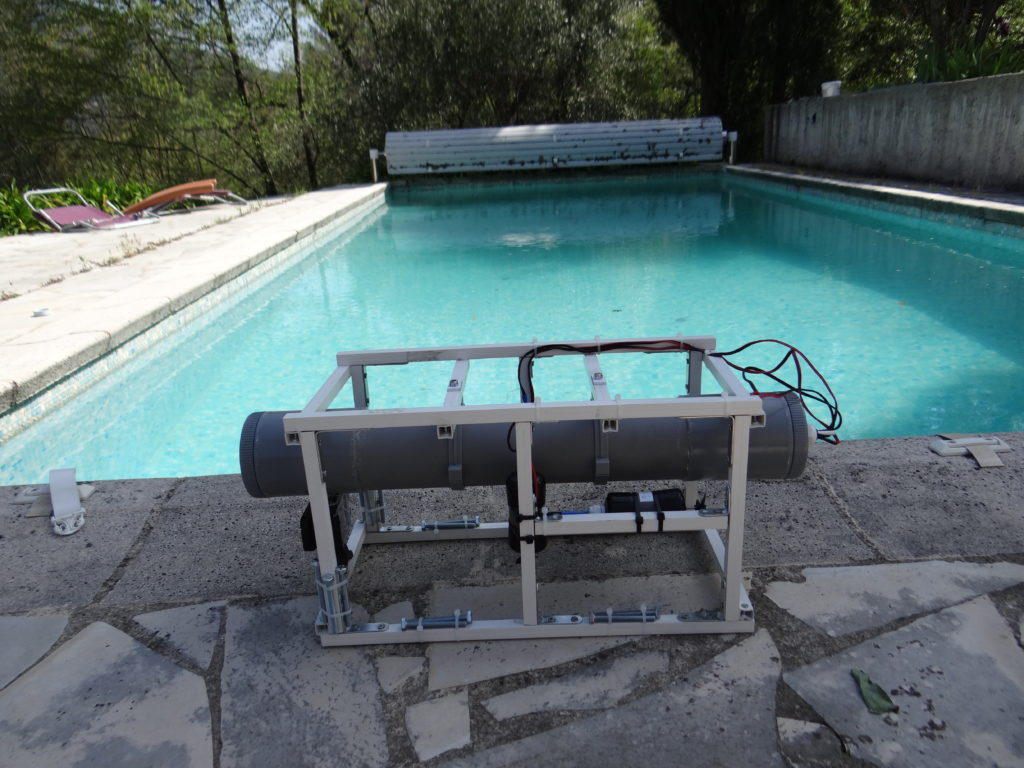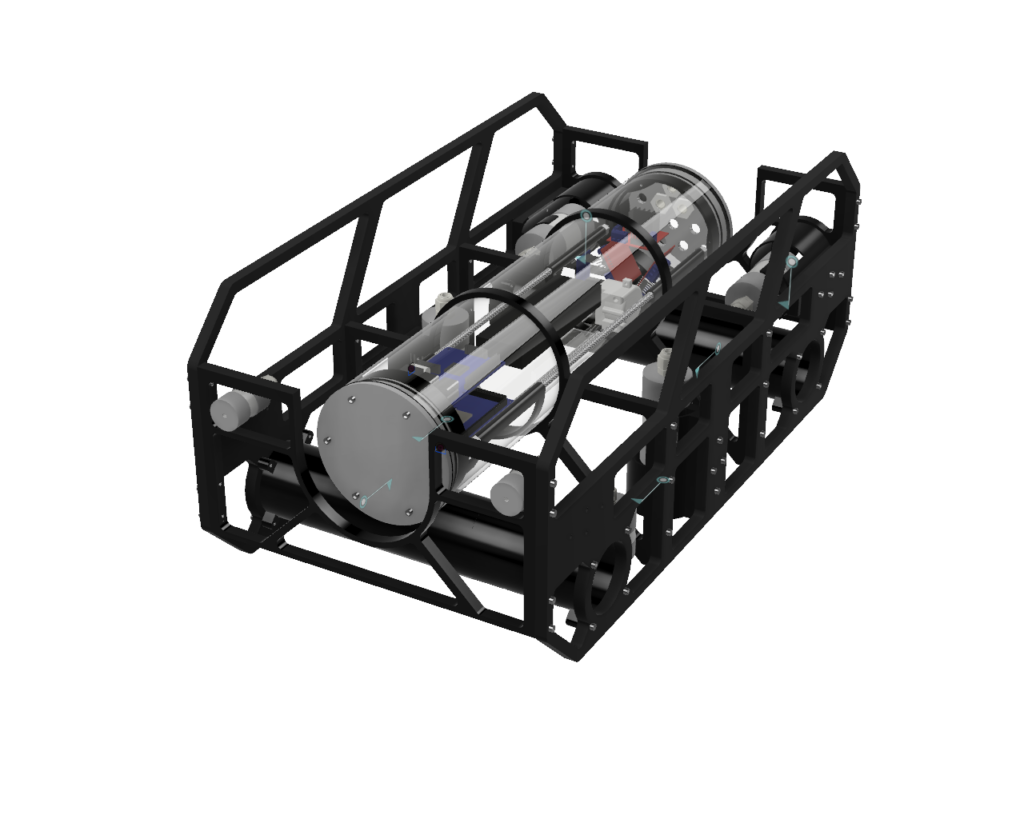Concepts and objectives
The NAUVA Projects aims to create a semi-autonomous underwater robot, without any wire connecting it to the surface. This kind of robot is called an Autonomous Underwater Vehicle (AUV), by opposition with the Remote Operated Vehicle (ROV) which has an umbilical cable for power and control. Hence, the name of the project !
Prototypes
Proto v1
The objectives of the first version of the prototype submarine are to :
- validate the solutions used for water ingress protection;
- validate the internal arrangement of components (batteries, electronics, ballast and cables);
- test navigation on the surface
For now, this prototype uses a 433MHz radio transceiver for control signals, which will be sufficient for the above objectives, while the sub is still on the surface.
This version of the prototype has been successfully tested in a swimming pool in April 2018 ! It remains controllable underwater, down to 1.5m below the surface, as the 433MHz signal manages to go through fresh water.

Proto v2
This second prototype will add several instruments, as well a new water tight cylinder, frame, control system… As you can see, it’s a completely new AUV in fact.

This version will receive the below additions :
- a GPS antenna, to get a position while on the surface;
- a gyroscope-compass, in order to control the orientation;
- an external pressure sensor, to measure the depth below the surface;
- an echo-sounder to get the distance to the bottom;
Proto v3
- adding a SONAR, to be able to check the surroundings;
- adding a ultra-sonic communication device, to be able to communicate with the surface;
- adding a RaspBerry Pi3 micro-computer, to control the SONAR and for real-time signal treatment;
Proto v4
- adding a robotic arm, with a pincer, to be able to catch other objects;
- adding a bin, to carry around all the captured trash;
Proto v5
The last step will introduce a new element into the global solution : a buoy, positionned by GPS, which will act as a drop zone for collected trash, as well as a battery recharge point for one or several robots operating in the same area. More or less, this is the principle of a Roomba robot applied to seafloor cleaning !

